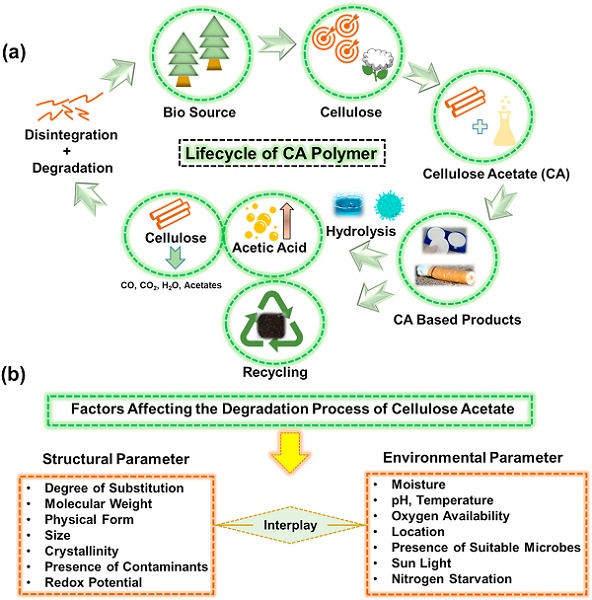Applications of Cellulose acetate
Background
Cellulose acetate was first prepared by Paul Schützenberger in 1865. It took another 29 years before Charles Cross and Edward Bevan patented a process for its manufacture.
At about the same time, Little in the US and Bronnert in Germany simultaneously produced cellulose acetate filaments, which were in actual fact cellulose triacetate, which differs in that it is does not easily dissolve on common solvents.
In 1904 George Miles found that partially hydrolyse cellulose acetate would dissolve in acetone. Brothers Henri and Camille Dreyfus exploited this fact to make cellulose acetate films and lacquers in 1910. During World War 1, the technology was used for waterproofing and stiffening the fabrics covering aeroplane wings.
In 1919, they introduced the first cellulose based yarn to the market, called Celanese.
Source
Commercially, cellulose acetate is made from processed wood pulp. The pulp is processed using acetic anhydride to form acetate flake from which products are made.
Coming from wood pulp, means that unlike most man-made fibres, it comes from a renewable resource and is biodegradable.
Another technique for producing cellulose acetate involved treating cotton with acetic acid, using sulfuric acid as a catalyst.
Applications
Cellulose acetate is used as a film base in photography, as a component in some adhesives, and as a frame material for eyeglasses; it is also used as a synthetic fiber and in the manufacture of cigarette filters, found in screwdriver handles, ink pen reservoirs, x-ray films.
You may like
Related articles And Qustion
Lastest Price from Cellulose acetate manufacturers

US $1000.00-400.00/g2025-04-21
- CAS:
- 9004-35-7
- Min. Order:
- 1g
- Purity:
- 99%
- Supply Ability:
- 5000

US $180.00/kg2025-04-15
- CAS:
- 9004-35-7
- Min. Order:
- 1kg
- Purity:
- 99%
- Supply Ability:
- 20ton


